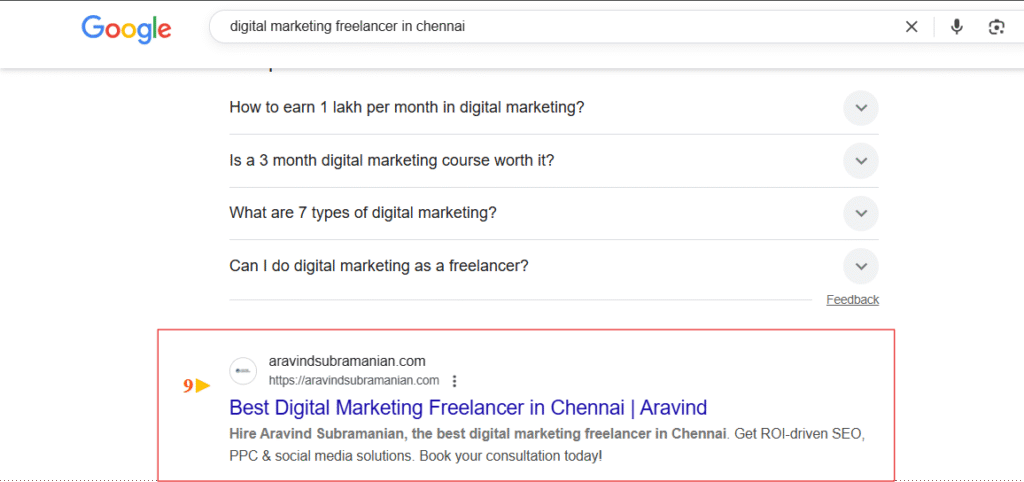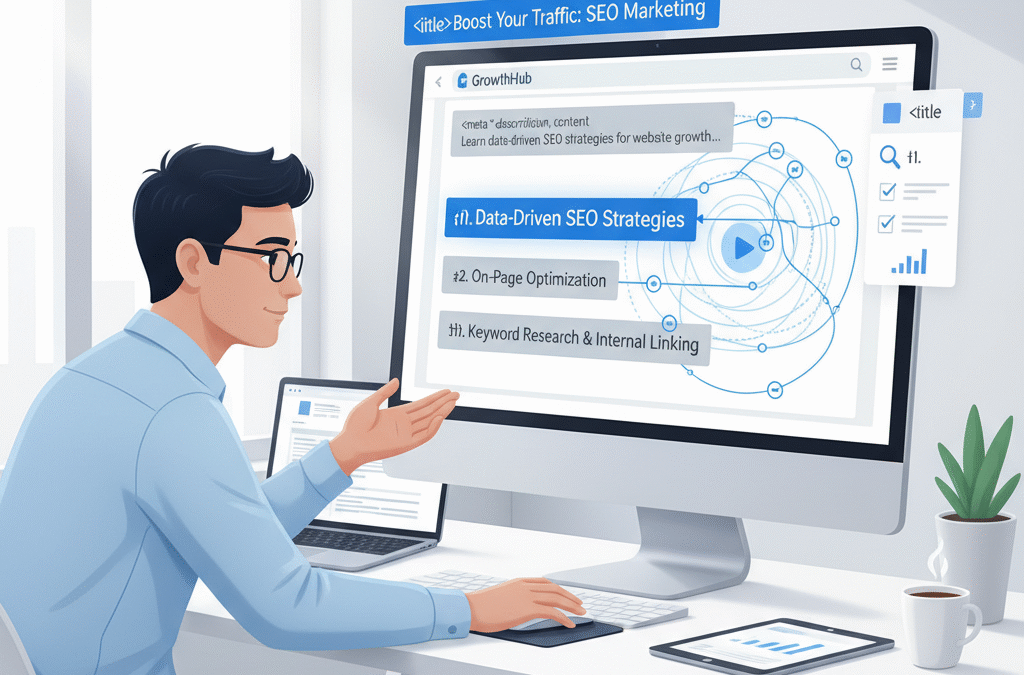If your website isn’t ranking well, the issue often lies not in backlinks, but in on page SEO.
On page SEO techniques help search engines understand your page and help users find what they’re looking for.
It’s about optimizing your content, structure, and visuals to make your site both human- and search-friendly.
In this post, we’ll cover 10 proven on page SEO techniques (with examples and visuals) that work for every business — whether you run an agency, blog, or eCommerce store.
Contents
- 1 Key Takeaways
- 2 10 Proven On Page SEO Techniques
- 2.1 1. Optimise Title Tags and Meta Descriptions
- 2.2 2. Structure Content Using Header Tags (H1–H3)
- 2.3 3. Create High-Quality, Keyword Optimised Content
- 2.4 4. Use SEO-Friendly URLs
- 2.5 5. Strengthen Internal Linking for SEO Authority
- 2.6 6. Optimise Images for SEO Performance
- 2.7 7. Improve Page Speed and Core Web Vitals
- 2.8 8. Make Your Website Mobile-Friendly
- 2.9 9. Add Schema Markup for Rich Snippets
- 2.10 10. Optimise for User Engagement Metrics
- 3 Conclusion
Key Takeaways
- On page SEO techniques improve search rankings by optimizing what’s on your website, not off it.
- Properly optimized titles, meta tags, and content can increase organic traffic by 30% or more.
- Visual examples and structured data strengthen E-E-A-T and user engagement.
- Businesses that apply these proven techniques see sustainable, long-term SEO results.
- Adding images and schema markup makes your content AI-overview-ready and more shareable.
10 Proven On Page SEO Techniques
1. Optimise Title Tags and Meta Descriptions
Your title tag and meta description are what users see first on Google. They influence whether people click your link or skip it.
How to Do It:
- Include your primary keyword (on page SEO techniques) near the start of your title.)
- Keep titles under 60 characters and descriptions under 160 characters.
- Add power words like “Proven,” “Actionable,” or “Step-by-Step.
Example:

2. Structure Content Using Header Tags (H1–H3)

Headers organise your content for readers and search engines. A clear structure helps Google understand your main topics and subtopics. Well-structured content is something top SEO experts in Chennai focus on because it helps improve readability, boosts dwell time, and signals to search engines that your content is comprehensive.
Best Practices:
- Use one H1 tag (your main title).
- Use H2s for sections and H3s for subpoints.
- Add long-tail variations like on page SEO checklist and on-page optimisation techniques naturally.
3. Create High-Quality, Keyword Optimised Content
Google’s algorithm now rewards useful, relevant, and human-first content.
Checklist:
- Maintain ~1% keyword density for your main keyword.
- Use semantic variations like SEO content optimisation techniques and on page SEO factors.
- Include examples, statistics, and solutions.
- Keep paragraphs short and conversational.
4. Use SEO-Friendly URLs
Short, keyword-rich URLs are easier to read and rank better.
Example:
✅ www.yourwebsite.com/on-page-seo-techniques
❌ www.yourwebsite.com/page?id=45876
Tips:
- Use hyphens, not underscores.
- Include your main keyword once.
- Keep it under 60 characters.
5. Strengthen Internal Linking for SEO Authority
Internal links connect your pages and help Google understand your site’s structure.
Actionable Tips:
- Add 2–4 internal links per post.
- Use descriptive anchor text (avoid “click here”).
- Link to relevant posts and service pages.
6. Optimise Images for SEO Performance
Images enhance engagement but they can also slow down your site if not optimized.
Image Optimization Checklist:
- Use descriptive filenames (e.g., “on-page-seo-checklist.png”).
- Add alt text with relevant keywords.
- Compress images with TinyPNG or Squoosh.
- Prefer WebP format for speed.
7. Improve Page Speed and Core Web Vitals
Google uses Core Web Vitals to measure how fast and stable your pages load.
Key Metrics:
- LCP (Largest Contentful Paint): < 2.5 seconds
- FID (First Input Delay): < 100ms
- CLS (Cumulative Layout Shift): < 0.1
Tools to Use:
- Google PageSpeed Insights
- GTmetrix
- Lighthouse
8. Make Your Website Mobile-Friendly
Over 63% of all searches happen on mobile. If your site isn’t responsive, you’re losing rankings.
Optimization Tips:
- Use a responsive design.
- Avoid pop-ups that block content.
- Ensure text and buttons are readable on mobile.
- Test your site with Google’s Mobile-Friendly Test.
9. Add Schema Markup for Rich Snippets
Schema markup helps Google understand your page and show enhanced results (like ratings or FAQs).
Common Types:
- Article Schema
- FAQ Schema
- Local Business Schema
- Product Schema
10. Optimise for User Engagement Metrics
Google rewards sites that keep users engaged. This includes how long users stay, how many pages they visit, and how quickly they leave. Great content written by digital marketing freelancers in India often performs well because it keeps users scrolling, blending information, visuals, and value seamlessly.
How to Improve Engagement:
- Add visuals, CTAs, and internal links.
- Use short, clear sentences.
- Incorporate videos or infographics.
- Focus on helpfulness over keyword stuffing.
Conclusion
These 10 on page SEO techniques form the backbone of your website’s success.
By combining content quality, keyword optimisation, structure, and visuals, you’ll build a website that search engines love and users trust.
Keep testing, improving, and optimising.
SEO is not about shortcuts; it’s about strategy and experience.
Whether you’re a business owner or a digital marketing freelancer in Chennai, following these proven methods can help you achieve long-term, sustainable growth online.
FAQS
What are on-page SEO techniques?
On page SEO techniques are optimisations you apply to your website including content, title tags, meta descriptions, internal links, and user experience.
How often should I optimize my website for SEO?
Perform an on-page SEO audit every 3–6 months to keep your content updated and relevant.
What are the most important on page SEO factors?
The top factors include content quality, page speed, mobile optimization, and keyword placement.
Can images help with SEO?
Yes. Optimized images improve user experience and can drive traffic through Google Image Search.
What tools help with on page SEO?
Popular tools include Ahrefs, Yoast SEO, SurferSEO, and Google Search Console.

